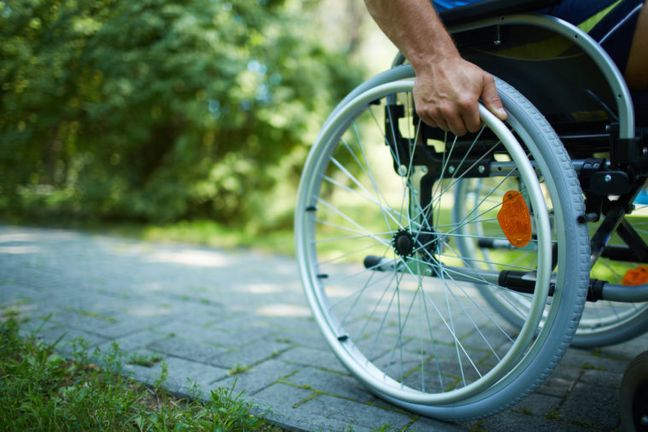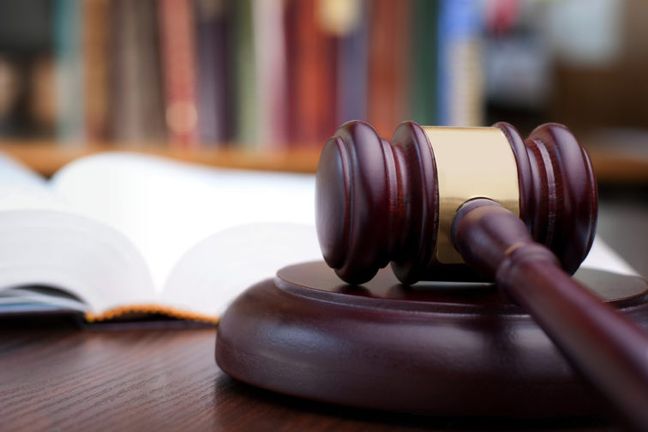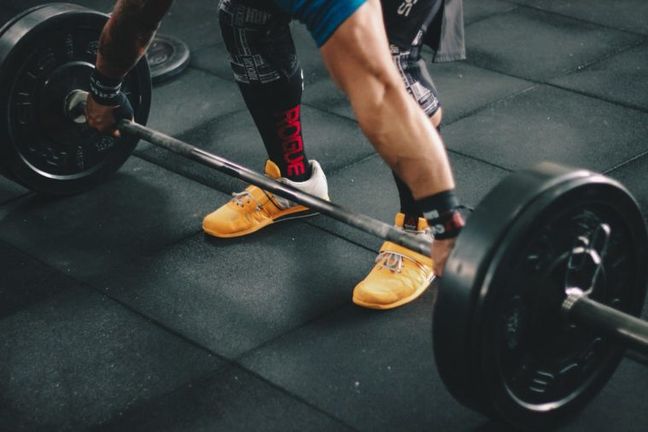Why does Tyson & Mendes emphasize the importance of aggressively arguing damages as part of its defense strategy? The answer is illustrated in Arias v. Porter, 44 Fla. L. Weekly D1373 (Fla. 2nd DCA May 29, 2019).
Overview
In Arias v. Porter, 44 Fla. L. Weekly D1373 (Fla. 2nd DCA May 29, 2019), a Florida appeals court concluded a jury verdict awarding an automobile accident victim medical expenses was also required to grant damages for past pain and suffering, but not for future pain and suffering.
In this case of admitted negligence, a jury found the plaintiff had suffered a permanent injury and awarded him past and future medical expenses, but nothing for past or future pain and suffering damages. The plaintiff appealed from a judgment denying his motion for additur on the grounds the jury’s zero verdict on both past and future noneconomic damages was inadequate.
The Second District Court of Appeal conducted a detailed analysis of its own precedent on this issue, coupled with the Supreme Court’s decision in Allstate v. Manasse, and explained that when a jury finds permanent injury and awards damages for past medical expenses, the plaintiff is entitled to at least a nominal award of past non-economic damages. Conversely, however, because future damages are far more uncertain, the key to the inquiry regarding an additur for those damages is whether the evidence of the future non-economic damages was substantially undisputed.
The Court held that because the jury awarded only 8% of the requested amount of future medical expenses, the amount awarded was actually not substantial. That factor, coupled with the disputed evidence of future damages stemming from this accident, caused the Court to conclude that while the additur should be granted for past non-economic damages, the trial court was within its discretion not to grant it with respect to the future damages.
Factual Summary
This case arose from a motor vehicle accident following which Mr. Arias filed a complaint, asserting he sustained a neck and back injury and seeking damages for medical expenses and pain and suffering. Mr. Arias’s wife joined as a plaintiff and asserted a claim for loss of consortium. Defendants admitted liability and the case went to trial, at which the jury was charged only with determining the appropriate damage award.
Claimed Damages
Mr. Arias’s claimed the accident caused both a permanent injury to his neck and a permanent aggravation of an already-existing condition in his back. He testified he started to have pain in his neck and back in the days immediately following the accident. He denied any prior neck pain.
Mr. Arias’s MRIs of the neck and back showed herniations of two discs in the neck. Conservative treatments did not resolve his complaints of neck pain. Three years and ten months after the accident, Mr. Arias had surgery to replace the two herniated discs. The surgery resulted in a significant reduction in pain, but Mr. Arias continues to experience a level of pain. There was evidence from Mr. Arias’s doctors that he would need future treatment, likely including a future surgery. There was also evidence from Mr. Arias’s doctors that his neck problems were causally related to the accident and that they would be permanent.
In addition to the neck pain, Mr. Arias complained that, after the accident, his back pain was substantially worse and was radiating into his legs. The pain was treated with various therapies, including epidural steroid injections performed under anesthesia and radiofrequency ablations. Mr. Arias’s current treating physician opined that Mr. Arias was suffering increased pain because the accident aggravated an existing back condition, the aggravation would be permanent, and he would continue to need treatment in the future, including a likely surgery on the back.
Mr. Arias sought to recover $68,514.19 for past medical expenses. The evidence of Mr. Arias’s future medical expenses ranged from as little as $173,711 to as much as $2,500,000. The potential future medical expenses included the cost of future neck surgery at $120,000, future back surgery at $100,000, and many different and recurring treatments for pain in both the neck and the back. In view of the testimony that his injuries were permanent, Mr. Arias also sought noneconomic damages to compensate him for past and future pain and suffering. [See § 627.737(2), Fla. Stat. (2011)] In closing argument, Mr. Arias’s counsel told the jury to award pain and suffering damages in an amount it determined to be appropriate in light of Mr. Arias’s life expectancy of twenty-five to twenty-seven years.
Defense Position
Defendants denied the accident caused a permanent injury to Mr. Arias’s back or neck and that any significant medical expenses and pain and suffering were attributable to the accident. Defendants attempted to show Mr. Arias’s complaints of ongoing injury and pain were not credible.
Evidence of preexisting degeneration in the neck and back was presented, which showed Mr. Arias suffered from degenerative disc disease in his back beginning at least in 1997, with complaints of pain radiating into his legs. Mr. Arias worked as a mechanic, which involved significant heavy lifting and stooping, which exacted a toll on his body over the course of years. He had three surgeries on his back in the years before the accident and, after the third, was no longer able to work as a mechanic. The MRIs taken shortly after the accident also showed degeneration in the neck, although it was less severe than in the back. Whether that deterioration could explain Mr. Arias’s complaints of neck pain was disputed.
Defendants also presented evidence of Mr. Arias’s other car accidents. Mr. Arias was in a car accident in the early 1990s which caused him pain through his whole body. There was also evidence Mr. Arias was in a car accident three and one-half years after the subject accident, and just three months before he had surgery on his neck.
In addition, Defendants argued the accident may not have been severe, given that Mr. Arias did not receive medical treatment at the scene and did not go to the hospital. There was testimony that at the scene he said he was okay and did not appear to be injured. There was also testimony that Mr. Arias helped put groceries in his son-in-law’s car at the accident scene.
Similarly, evidence was presented which disputed Mr. Arias’s subjective complaints of neck pain. For instant, in an application for social security disability benefits submitted six months after the accident, Mr. Arias complained of pain and other symptoms related to degenerative disc disease in his back and attributed that pain to his work as a mechanic. He made no mention of any pain in his neck. There was also evidence of substantial gaps in Mr. Arias’s treatment for back and neck pain, as well as medical records stating that Mr. Arias was not complaining of neck pain.
Further, there was evidence that Mr. Arias continued to have back pain after his last surgery, that his back pain six months after the accident was similar to his pain before it, that his medication after the accident was the same as his medication before the accident, and that Mr. Arias himself attributed his ongoing back pain not to the accident, but rather to his work history as a mechanic.
Lastly, Defendants presented expert testimony on causation, permanency, and damages. A defense medical expert opined that Mr. Arias did not suffer a permanent injury to his neck or back as a result of the accident and the accident would not cause Mr. Arias to incur any future medical expenses. He further opined that Mr. Arias’s complaints of pain and course of seeking treatment in the days following the accident were consistent with a sprain-strain injury at the neck, which is common in this kind of accident, which is temporary, and which should have resolved within eight to twelve weeks of the accident. The expert opined that Mr. Arias’s ongoing symptoms were the result of already-existing degeneration of the neck and spine.
Overall, Defendants argued that to the extent the accident caused any injury to Mr. Arias, it was only a sprain-strain injury to the neck and was not permanent. Defendants asserted that Mr. Arias was entitled to no more than $7,000 for past medical expenses for treatment of the sprain-strain, nothing for future medical expenses, and nothing for non-economic damages. Nonetheless, Defendants argued that, to the extent the jury decided to award Mr. Arias something for pain and suffering, the total verdict (inclusive of medical expenses) should not exceed $50,000.
Jury Verdict
The jury awarded $50,000 for past medical expenses, less than the $68,514.19 plaintiff sought and more than the $7,000 Defendants argued for. The jury also awarded $200,000 for future medical expenses, at the very low end of the range Mr. Arias’s evidence supported ($173,711 to $2,500,000) and more than the zero sum argued for by the Defendants. The jury also found that Mr. Arias suffered a permanent injury, although it was not asked to and did not specify whether the permanent injury was in the neck, the back, or both. The jury awarded Mr. Arias nothing for past or future noneconomic damages.
Motion for Additur
Mr. Arias filed a motion for additur under section 768.043, Florida Statutes (2016), arguing the jury’s zero verdict for damages for past and future non-economic damages was inadequate in light of the evidence presented at trial. After hearing argument, the trial court denied the motion, reasoning that the evidence as to whether Mr. Arias had non-economic damages caused by the accident was disputed and, under those circumstances, it would be error to “veto the jury verdict by granting a motion for additur.” Mr. Arias appeal the trial court’s ruling.
Appellate Court Analysis
Section 768.043 governs additur in motor vehicle cases and provides, in relevant part, “it shall be the responsibility of the court, upon proper motion, to review the amount of” the jury’s “award to determine if such amount is clearly . . . inadequate in light of the facts and circumstances” and, if it finds the amount inadequate, to order an additur. §768.043(1). A trial court determines whether a verdict is inadequate by reference to five statutory criteria: (1) whether the verdict was infected by “prejudice, passion, or corruption;”(2) whether the jury ignored the evidence or misconceived the merits; (3) whether the jury took improper elements of damages into account or engaged in speculation; (4) whether the award bears a reasonable relation to the damages proved and the injury suffered; and (5) whether the award is supported by the evidence and could have been logically determined by reasonable people. See § 768.043(2)(a)-(e). This assessment obviously involves a level of involvement with the trial and evidence that can be delivered only by the trial judge who heard and saw the evidence. Accordingly, the Court of Appeal reviewed the order denying a motion for additur under the deferential abuse of discretion standard. See § 768.043(3).
Mr. Arias argued on appeal that because the jury found in his favor on causation and permanency and awarded damages for past and future medical expenses, it was required under the circumstances to also award past and future noneconomic damages.
In Allstate Insurance Co. v. Manasse, 707 So. 2d 1110 (Fla. 1998), a jury verdict found a permanent injury and awarded past and future medical expenses and past noneconomic damages but awarded nothing for future noneconomic damages. The plaintiff filed a motion for a new trial arguing the verdict was inadequate, which the trial court denied. Id. The Fourth District reversed, holding the future noneconomic damages verdict was inadequate in light of the jury’s findings of permanent injury and its award of future medical expenses. Id. It certified to the Supreme Court the question of whether a verdict is inadequate as a matter of law when a jury finds permanency and awards past and future medical expenses but fails to award future noneconomic damages. Id. at 1110. The Supreme Court held that a jury is not required, as a matter of law, to award damages for future pain and suffering simply because it finds a permanent injury and awards future medical costs.
Since Allstate Insurance, decisions with respect to past and future noneconomic damages have hinged on whether the evidence of such damages is substantially undisputed (if yes, then a zero verdict is inadequate as a matter of law; if no, then it is not) and have simultaneously suggested that an award of past (as distinguished from future) noneconomic damages is required when a jury finds permanency and awards past medical expenses.
In Ellender v. Bricker, 967 So. 2d 1088, 1093 (Fla. 2d DCA 2007), the court addressed the denial of a motion for additur or new trial in an automobile negligence case in which the jury found causation and permanency, awarded past and future medical expenses of about half of what the plaintiff asked for, and awarded nothing for past or future noneconomic damages. The Court concluded that where the evidence is undisputed, or substantially undisputed, a plaintiff has experienced and will experience pain and suffering, a zero award for pain and suffering is inadequate as a matter of law. Id. at 1093 (quoting Dolphin Cruise Line, Inc. v. Stassinopoulos, 731 So. 2d 708, 710 (Fla. 3d DCA 1999)).
In Sukraj v. Phoeung, 241 So. 3d 911, 912 (Fla. 2d DCA 2018), the plaintiff in an automobile accident case alleged permanent injury to his shoulder, neck, and back. A jury found permanency and awarded in excess of $53,000 for past medicals and $50,000 for future medicals, but nothing for past or future noneconomic damages. Id. The trial court denied plaintiff’s motion for additur or a new trial. Id. The Court of Appeal reversed with respect to past noneconomic damages because the evidence plaintiff had suffered past pain and suffering in his shoulder as a result of the accident was undisputed. Id. The ruling was affirmed as to future noneconomic damages because it was disputed plaintiff had suffered past pain and suffering for the injuries to his neck and back and would experience future pain and suffering as a result of the accident.
Holding and Reasoning
Applying appellate precedents to the trial court’s order, the Court of Appeal reserved the trial court’s order denying an additur with respect to past noneconomic damages because the verdict was inadequate as a matter of law, and it affirm the order with respect to future noneconomic damages.
Prior court decisions on past noneconomic damages can be read to support two propositions: (1) a zero verdict for past noneconomic damages is inadequate as a matter of law when the trial evidence of the existence of such is substantially undisputed, and (2) when a jury finds the plaintiff suffered injuries that required treatment as evidenced by an award of past medical expenses, a zero award cannot stand. This Court concluded the zero verdict in this case failed as a matter of law under either measure.
This Court concluded the Arias fell within the scope of cases like Ellender which provide that an award of at least nominal past noneconomic damages is required when the jury finds permanency and awards past medicals. Further, it is also a case where, at a minimum, the trial evidence of at least some past noneconomic damages resulting from a neck injury was substantially undisputed. As a matter of law then, it was error to deny the motion for additur to the extent it challenged the jury’s award of no past noneconomic damages.
To the contrary, however, the evidence concerning any future noneconomic damages Mr. Arias would suffer was in substantial conflict. Any conflicts in the evidence were for the jury to resolve. The Court of Appeal found it was well within the zone of reasonableness for the trial court to conclude the jury’s zero verdict on future noneconomic damages was consistent with the evidence and merits of the case, bore a reasonable relationship to the damages and injuries proved, and could be logically adduced by reasonable people.
Tyson & Mendes Defense Methods
Tyson & Mendes uses proven defense methods to reduce damages in admitted liability trials, using its defense themes and always giving a number.
We use the defense themes of responsibility, reasonableness, and common sense at trial. In this case, the defense accepted responsibility for this accident and admitted liability at trial. Second, the defense argued that plaintiff’s injuries were not reasonably related to the accident. The defense used an expert to educate the jury and to argue that the medical records did not comport with plaintiff’s theory of the case.
Tyson & Mendes also likes to urge the jury to use their common sense when reaching their verdict. These themes resonate with the jury and allow them to return a reasonable verdict for the defense.
This recent case demonstrates that it is important to use these proven defense methods and to challenge a plaintiff’s damages, as well as and pain and suffering, in order to “substantially dispute” the evidence. These tactics serve not only to limit awards at trial but provide support to oppose a plaintiff’s post-trial motion for additur.

 Author: Terra Affourtit
Author: Terra Affourtit
 Cannabis Workers Allege Quota to Trim 4 Pounds a Day Violates the California Labor Code
Cannabis Workers Allege Quota to Trim 4 Pounds a Day Violates the California Labor Code
 The Ninth Circuit Reminds Us: Every Word Matters
The Ninth Circuit Reminds Us: Every Word Matters
 NO WAY, PRO SE! The Consequences of Abusing the Judicial System as a Pro Se Litigant in Colorado
NO WAY, PRO SE! The Consequences of Abusing the Judicial System as a Pro Se Litigant in Colorado
 Victim of Financial Mismanagement or Unlawful Retaliation? New Jersey City University Program Founder Claims School Retaliated After Reporting Alleged Sexual Harassment
Victim of Financial Mismanagement or Unlawful Retaliation? New Jersey City University Program Founder Claims School Retaliated After Reporting Alleged Sexual Harassment
 “Real Housewives” Gets a Reality Check
“Real Housewives” Gets a Reality Check
 Missing a Chapter: Insufficiency of Expert Deposition Testimony in Medical Malpractice Litigation
Missing a Chapter: Insufficiency of Expert Deposition Testimony in Medical Malpractice Litigation
 Crash Course: Why Summary Judgment Misses the Mark in Illinois Multi-Cause Limousine Crash Collision
Crash Course: Why Summary Judgment Misses the Mark in Illinois Multi-Cause Limousine Crash Collision
 Bitter Truths: Lead, Cadmium, and Defective Pleadings in California Chocolate Class Action
Bitter Truths: Lead, Cadmium, and Defective Pleadings in California Chocolate Class Action
 The Law of Unintended Consequences: Including Insurance Brokers in Litigation Strategy Communication May Waive the Attorney-Client Privilege
The Law of Unintended Consequences: Including Insurance Brokers in Litigation Strategy Communication May Waive the Attorney-Client Privilege
 Colorado Case Law Update
Colorado Case Law Update
 Arizona Case Law Update
Arizona Case Law Update
 Colorado Case Law Update
Colorado Case Law Update
 The Emotional Distress Catch-22
The Emotional Distress Catch-22
 Defamation – Immunity Under the Communications Decency Act For Republishers or Reposters Absent Material Modification
Defamation – Immunity Under the Communications Decency Act For Republishers or Reposters Absent Material Modification
 Stop Burning Your Core! Ensure Your Gym Rats Leave With Contracts
Stop Burning Your Core! Ensure Your Gym Rats Leave With Contracts